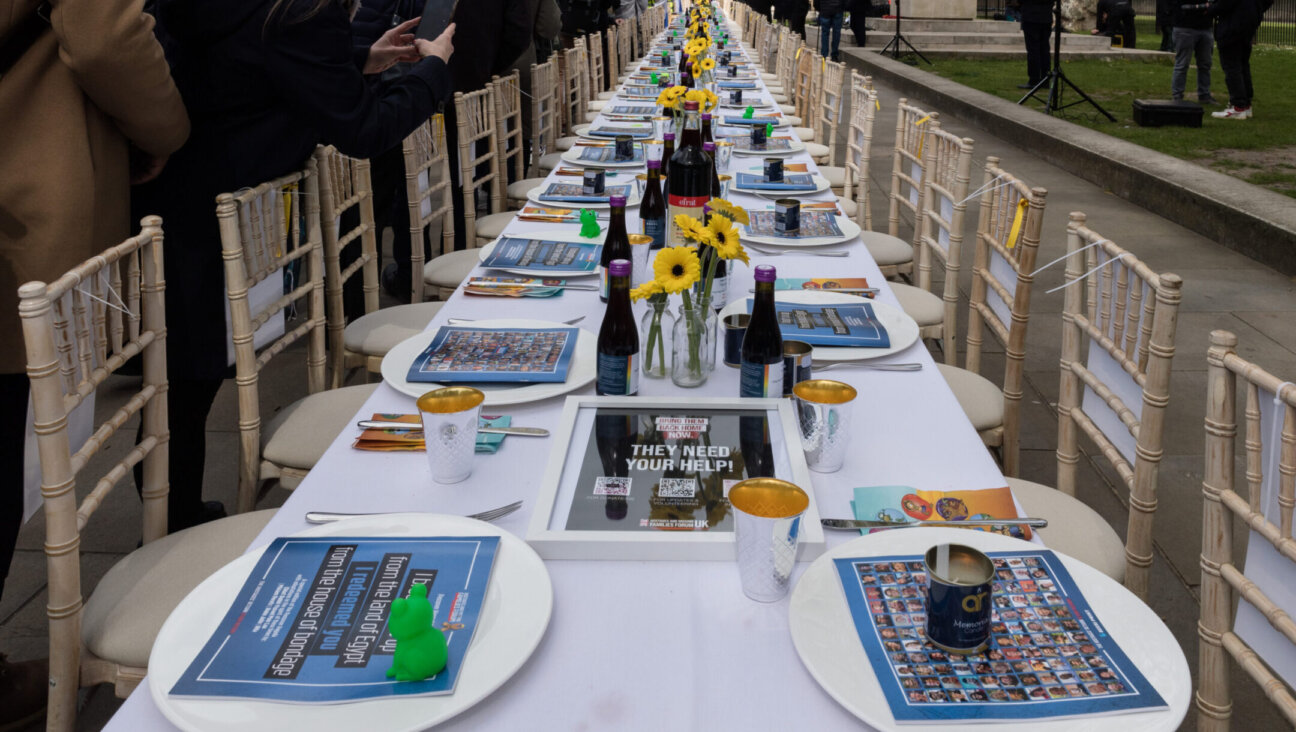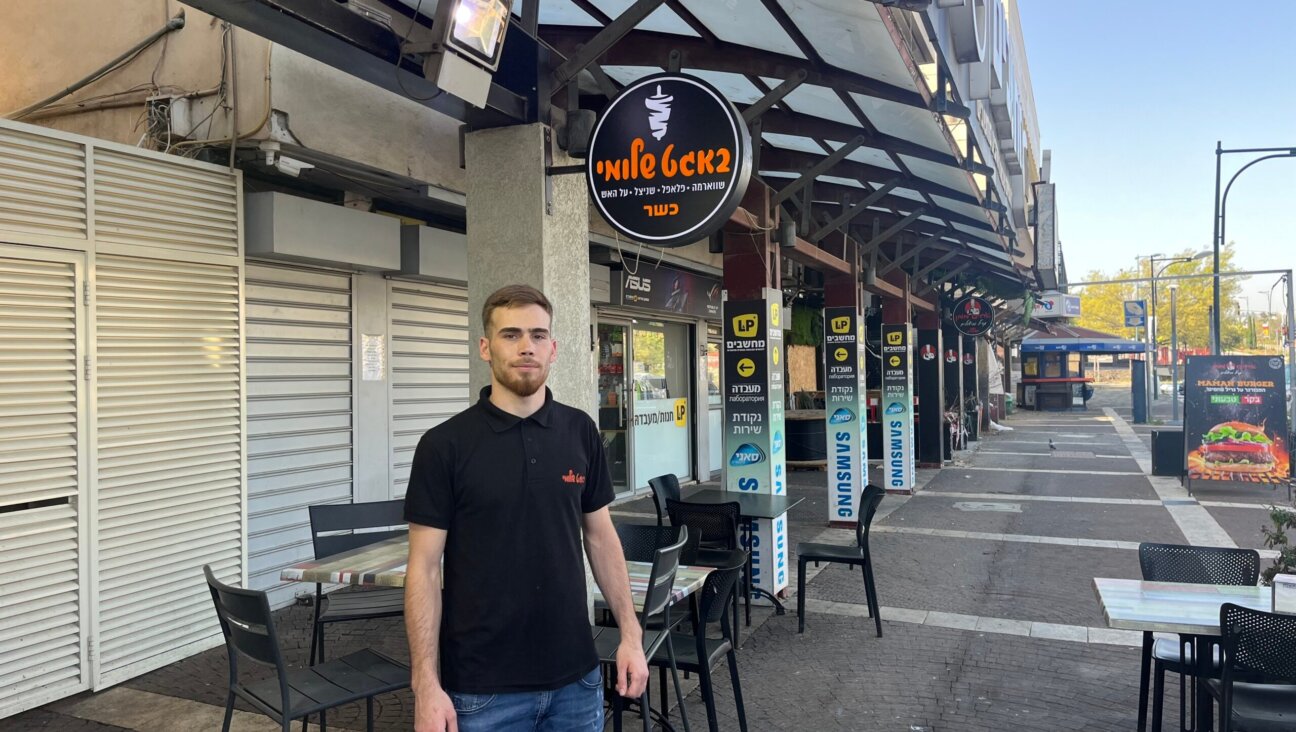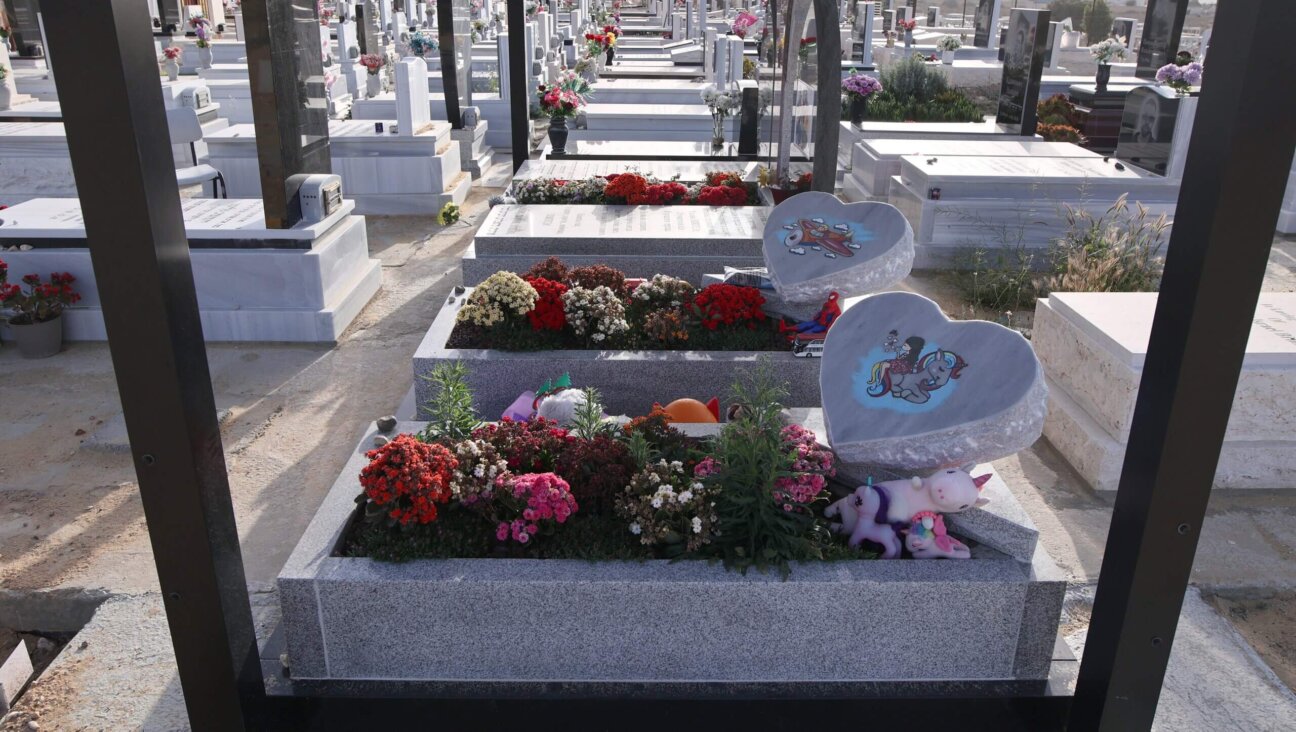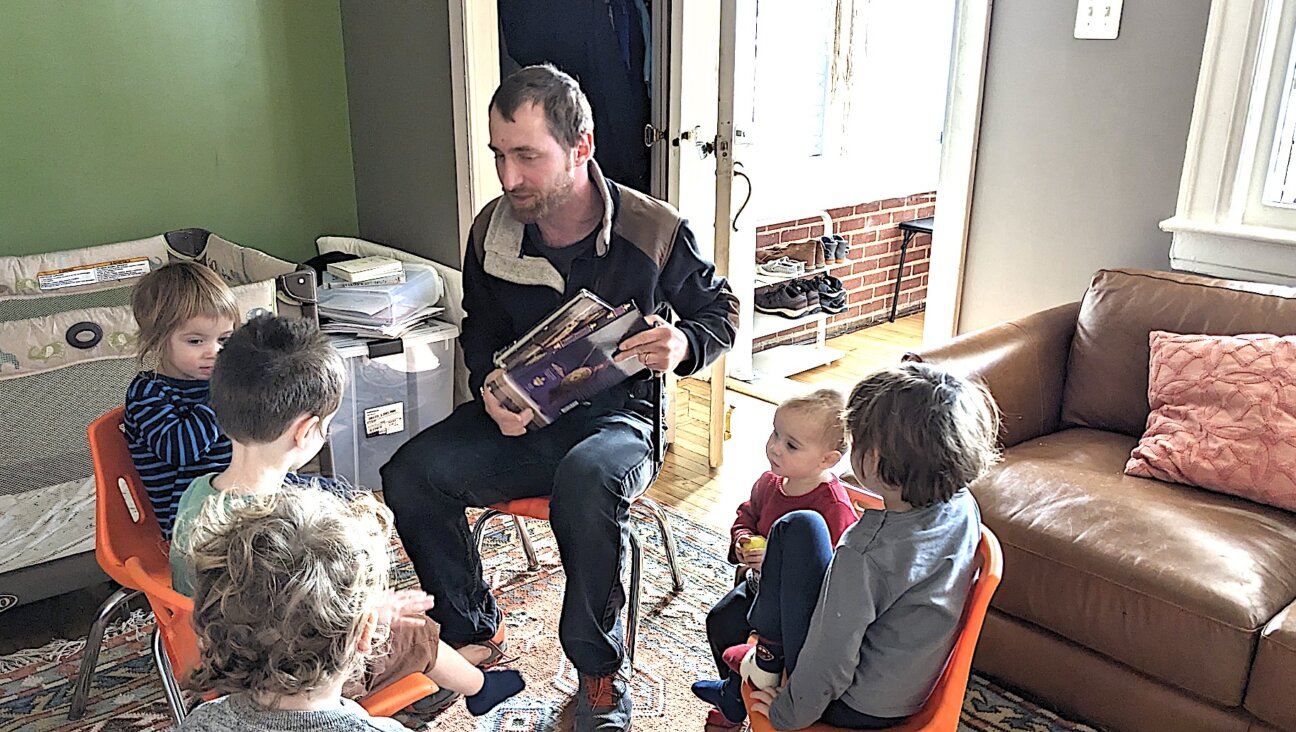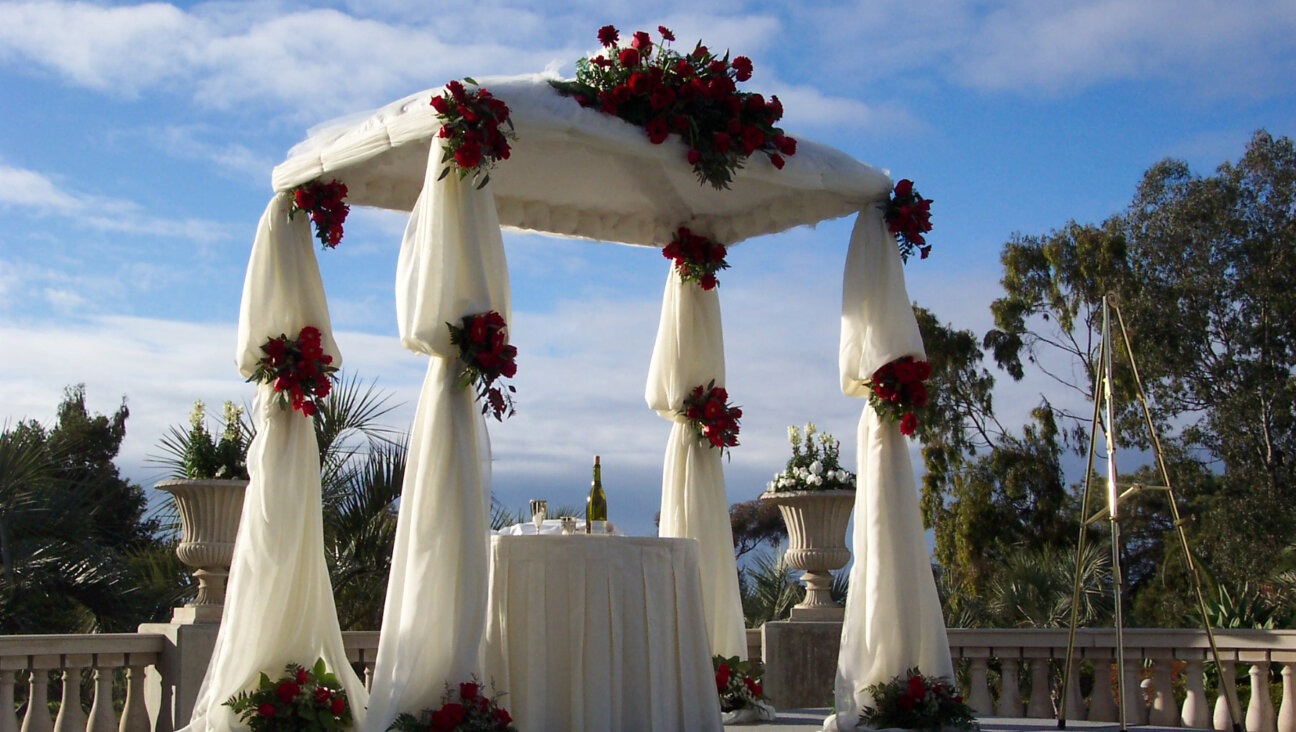‘The Music is Filled With Colors’

Graphic by Angelie Zaslavsky

Multi-Sensory Experience: The painting Schantz created during a performance of Krása?s work in Boston in September 2008. Image by COURTESY OF JIM SCHANTZ
By the time Hans Krása was 22, his composing career was already off to an auspicious start. In 1921, his “String Quartet” premiered in Paris to rave reviews that compared him with Schoenberg and Bartok. The Prague native had made his professional debut the year before, with “4 Orchesterlieder – Op. 1.” After that, Austrian conductor Alexander Zemlinsky took Krása under his artistic wing. It was a vibrant time to be a young and talented composer in Europe, and Krása’s star was on the rise.
But the ascent was abruptly cut short when he was arrested by Nazi soldiers in 1942 and sent to the Theresienstadt ghetto in northern Czechoslovakia. In October 1944, just before he turned 45, Krása was sent to Auschwitz, where he was immediately put to death.

Multi-Sensory Experience: Artist Jim Schantz paints onstage while the Hawthorne String Quartet performs in March. Image by MIKE COMATE
Forty years later, violist Mark Ludwig of the Boston Symphony Orchestra unearthed some of Krása’s musical masterpieces through his work with the Terezín Chamber Music Foundation, a not-for-profit organization dedicated to preserving and promoting the works of composers persecuted during the Nazi regime, with an emphasis on the Czech composers incarcerated in the Theresienstadt concentration camp, known in Czech as Terezín.
Even in such demoralizing conditions, Ludwig noted, the camp was a hotbed of creativity. Imprisoned composers and actors routinely gave performances in a cramped attic in the barracks to try to keep spirits aloft.
In 1986, Ludwig created a vehicle that would channel the works of artists who perished in the Holocaust into concerts performed around the world, introducing the compositions to new audiences. He and three other members of the Boston Symphony Orchestra formed the Hawthorne String Quartet, which performs works commissioned by the Terezín Chamber Music Foundation.
On August 14, Ludwig, along with violinists Ronan Lefkowitz and Si-Jing Huang, and cellist Sato Knudsen will perform “String Quartet” in three movements at Tanglewood’s Ozawa Hall. During the 25-minute performance, Berkshire painter Jim Schantz will be with them onstage, creating an acrylic and oil painting.
Ludwig, who is now the director of the foundation, discovered through research that it was Krása’s intention to have an artist paint in front of the audience in response to his composition. Although it wasn’t a new concept at the time, Ludwig said the effect remains undeniably powerful decades later.
“Krása’s ‘String Quartet’ is a great work with a variety of moods that he coaxed out of instruments; it’s a beautiful palate of colors,” he said. “That’s why the painting makes sense, because the music is filled with colors.”
Ludwig said that the onstage collaboration gives the audience a better understanding of the creative process.
“It takes the mystery out of art,” he said. “To witness the chemistry between musicians and painter, it becomes a multi-sensory experience. Watching Jim’s body language during the live performance is like watching the elements of dance.”
Krása didn’t specify what he wanted the artist to paint, and Schantz, a landscape painter, decided on the theme “Krása Skyscapes.”
“The first time I listened to ‘String Quartet,’ a strong sense of color came to me: intense reds, oranges and deep violets, because the music has a very passionate energy,” Schantz said. “There are moments of joy and playfulness, but also a certain amount of angst.”
Though Schantz takes to the stage with the same palate of colors for his blank canvas, he said that each “Skyscape” turns out differently: “Each time we play, there’s a variation in the mood and in the environment. I’ve done seven so far, and the outcome is never the same.”
Some of Schantz’s past Skyscapes are collected for exhibitions and are also for sale, and the artist donates a portion of sales to the foundation’s program for emerging composers.
“As the voices of Terezín were cut short, perhaps the best memorial to them is to give emerging composers of today an opportunity in their memory,” Ludwig said. “We do not ask composers to write Holocaust pieces, but to compose based on wherever they are in their development and be true to their voice.”
Although the concert isn’t being billed as a Holocaust memorial, Ludwig said, it’s impossible to divorce history from the music.
“You can’t help but think of history when you hear the piece,” he said. “When Krása wrote it, there was no way he could have known what was lying ahead for him 20 years later. We look at ‘String Quartet’ as a celebration of his creative spirit.”
Schantz agrees. “The composition is powerful, compelling and contains a message of hope and promise,” he said. “There’s a spiritual quality to the sky; it really works symbolically as a sign of freedom.”
The Hawthorne String Quartet and artist Jim Schantz will perform Hans Krása’s “String Quartet” at 6 p.m. August 14 at Tanglewood in Lenox, Mass. It also will perform works by Gideon Klein and Bohuslav Martinu. For more information, visit www.tanglewood.org.
Stacey Morris is a freelance writer who has written for The New York Times Syndicate, Better Homes and Gardens, the Jerusalem Post and Adirondack Life.
